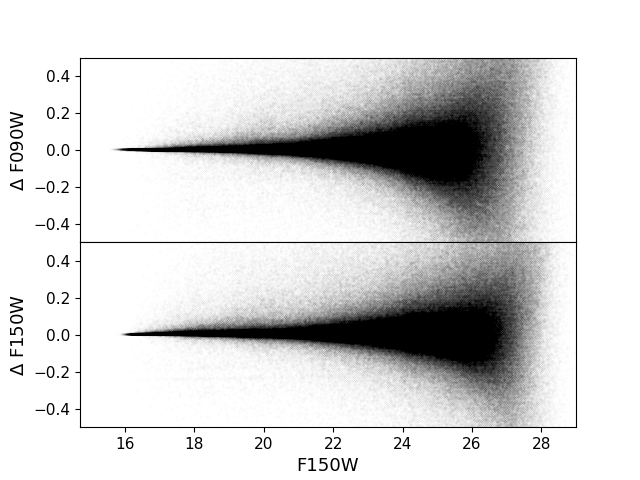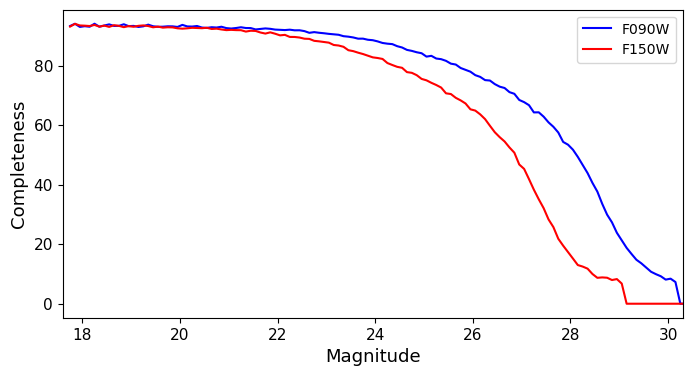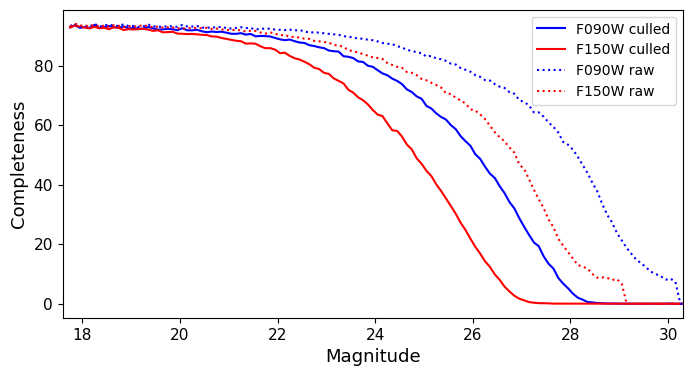Working with artifical star tests
Now that we have an AST output file, we can use it to evaluate the photometric performance of our run. If working with Nimage frames, the first (4+2 Nimage) columns out the AST output file will be:
1 1 X Y C1 M1 C2 M2 C3 M3.....
Where X and Y are the input position on the reference image coordinate system, and Cn and Mn are the counts and magnitude of the mock star in the nth frame. After these initial columns, the output file has exactly the same structure of the original photometry file. The file will contain one entry per artificial star. Stars which are not detected in the output photometry will have magnitude measurements of 99.999.
From this file, we can use the measured properties of the input ASTs to characterize the performance of our photometric reduction. For example, the difference between the output and input magnitude is a good tracer of the real photometric uncertainty which, especially at low SNR, can differ substantially from the nominal photometric error provided by dolphot:

Alternatively, we can use the number of ASTs recovered, as a function of magnitude, to estimate the selection function of our photometry:

Note
When working with ASTs, it is important to preserve information about non-detections, e.g., record their magnitude as 99.999, or however you choose to designate non-detections, rather then simply discarding the non-detectedculled stars. This is because non-detected stars are needed to compute the completeness properties of the catalog.
It is important to remeber that the ASTs needs to be postprocessed exactly in the same way as the primary photometric catalog. This includes spatial cuts, color cuts and culling through the photometric quality metrics. This is necessary to ensure that the ASTs provide a truthful reprensenation of the final photometric performance. In our M92 example, we can apply the Weisz et al. (2024) cuts to our AST catalog, to quantify the effect of our selection criteria. Note how the completeness at low magnitude is affected by the stringent photometric requirements:

